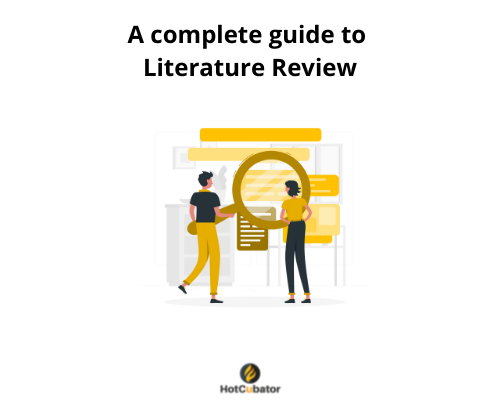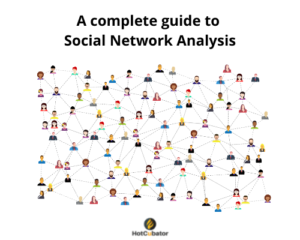
If you are a research professional – whether student, working as a research assistant or any other craft where research is a part of it then literature review will be one of the most essential steps. Just hang in there, this article will be useful to your knowledge I promise. Literature review aka ‘lit review’ helps to gather knowledge about a particular field or in research terms a ‘phenomenon’.
We can define literature review as a task that involves identifying and synthesising relevant knowledge within a particular field. Lit review illuminates how knowledge has evolved within the field, highlighting what has already been done, what is generally accepted, what is emerging and what is the current state of thinking on the topic. From an academic point of view, if the purpose is a research degree (eg. Master’s, DBA, PhD), lit review will help to identify the research gap. Through lit review the researcher can spot the under-researched area and then propose to make a contribution. From an organisational perspective, lit review aims to understand what has already happened in the particular field so that there is enough evidence to work on a specific project or program. The essence is standing on the shoulder of giants to see what has happened before. And for that reason, lit review, plays a very important role to look for that knowledge already acquired by other scholars before. Without a solid lit review, your claims in your research will be nothing less than vague. The strength of any research is a rigorous lit review which then offers new dimensions, or identifies gaps, or expands the scope of the study.
When you are new to research, you will at first bound to get overwhelmed since you are not sure where and how to start. So, in this article, I am imparting my experience of lit review which I learnt the hard way. If I would have read this article 10 years before (or a similar one which I couldn’t find), my journey would have been so easier! Of course, I had supervisors and they gave me guidance on how to conduct literature review, but that was not as systematic and simple as what I am about to share. Having said that, I am not about share something novel or nothing unheard of, rather a process which is – decluttered.
Here are four steps that I found very helpful if you want to conduct a systematic literature review –
Selecting the right source
Although it might seem hard at the beginning but, it is really important to identify the academic or scholarly sources that are relevant to your study area. Typical sources would include – books, journal articles, theses, research reports, conference proceedings and web resources. There are specific databases from where you can find relevant resources for your chosen field. For example, if you are a researcher in the field of management, the best sources would be –
If you are looking for knowledge from the industry which would include magazines, trade publications, new articles then there are some great databases like Factiva, ProQuest.
Identifying the key texts
When you are just getting started with literature review, identifying the key texts would be hard. But you should try your best to nominate those key words that will take place into your study. And in your literature search, you need to include them from the beginning. The sooner that you can do this is better for you. Let me give you my example – after I completed my MPhil course focused on Sustainable service innovation, I decided to do a PhD. By then, I already had my focus which was on social enterprises and social entrepreneurs. So, the key words that I used for my literature review included:
- Social enterprise
- Social entrepreneurship
- Social innovation
- Sustainability
For your study, if you want to nominate the key words – probably, think about the broad areas where you would like to concentrate. Then deconstruct that whole concept and filter the key words encompassing the field of knowledge.
Synthesising information systematically
As I am looking back to my study, it now seems extremely easy which was not when I was doing the actual literature review. It was nothing less than messy! I had my journal articles, books and everything all over the place. Everyday I used to read hundreds of articles and desperately tried to summarise them. A lot of it was due to peer-pressure or my very ‘nosy supervisors’. It felt like I was in a competition on how many articles I can read and include in my reference list. But there is a systematic way to do it which can really help to reduce your precious time and keep things tidy from the very beginning of your research journey. The following table is the best way to keep your literature review organised and systematic. In terms of looking for resources, I suggest that always look for more recent knowledge than something which was back dated eg. more than 5 years old. Of course, if it is a seminal study/resource then you can go as far as 100 years but try not to include sources which are more than 5 years old. This would limit your scope and also provide more strength to your findings. One bitter aspect of research study like iPhones is that – they get old very quickly!
| Author | Year | Title | Summary of findings | Methodology | Sample | Implications/contributions | Research limitations | Links to article |
You must have to think about the ‘publish-ability’ of your research after you have completed your degree. Although, I didn’t bother too much, as I deviated from academic track to venture into other areas. But that’s a separate discussion – probably, I will write another article on that.
Automate the process
Process automation undoubtedly is the most important step in research. Although not many academics are quite used to with process automation! I have always tried to automate the process. In lit review, process automation means to use software tools to record your literature. There are many popular software choices for referencing like – Endnote, EasyBib and Mendeley. I have always used Endnote for its simple and user-friendly features. You may try out others and see which one you like. After that, every time you read a new article or any other resources, simply add the citation into your referencing library which will save you a life time worth of task at the end.
References:
https://guides.lib.uoguelph.ca/c.php?g=130964&p=5000948








